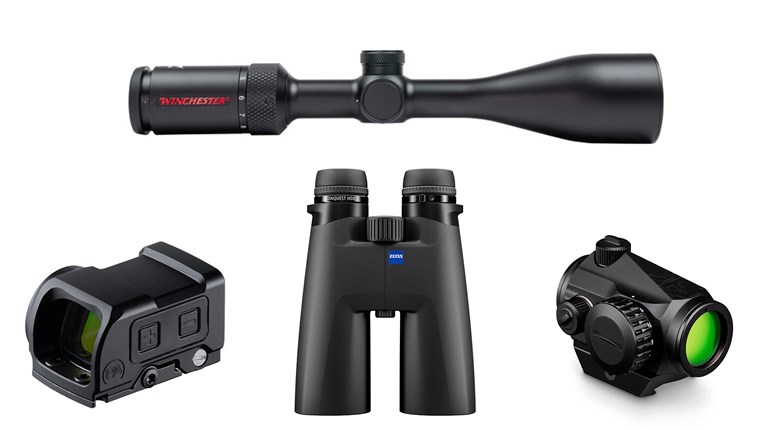
At the heart of responsible hunting lies the NRA Hunter's Education Course, a vital program that equips hunters of all ages with the knowledge and skills needed to ensure a safe and ethical hunting experience. This course, offered free of charge through the NRA and easily accessed online from the comfort of your home, covers a wide range of topics, from gun safety to proper marksmanship and the importance of wildlife conservation. Read on as we explore the topics covered in this course and what you can expect should you, a friend or family member decide to enroll.
Firearm Basics
The NRA course starts with an overview of rifles. In the section aptly named "Understanding Your Rifle," you will dive into the world of rifles, learning about their parts and basic functions and how to handle them safely. This knowledge forms the foundation for a hunter's proficiency and both in the field and off-season while on the range.
The next section, "Understanding Your Shotgun," provides you with a close look into the parts, operation, and safe handling practices of shotguns. There’s a great visual on the different types of shotgun ammunition (birdshot, buckshot and slugs) and how to determine which is the proper choice for your hunt.
"Understanding Your Muzzleloader" portrays the unique characteristics and techniques essential for this time-honored method of taking game. In this section, you will gain knowledge of the unique loading process of this platform, with excellent visuals and animated graphics located throughout.
Have you ever wanted to hunt with a handgun? The "Understanding Your Pistol" section goes over the parts of handguns, their function and reasons why one may choose to hunt with a handgun versus a more popular option such as a rifle or shotgun.
Although they don’t go “BANG,” the NRA has also included a section titled “Understanding Bows and Crossbows.” Diving into the world of string, you will come to learn the various parts and functions of four different types of bows including compound bows, recurve bows, long bows and crossbows. Although you may only be interested in hunting with one specific platform, the various sections in the "Firearm Basics" chapter of this course go a long way in making learning fun, providing animated graphics and interactive quizzes and games along the way keeping the attention of both young and not-so-young!
Firearm Handling
Understanding ammunition is essential when it comes to the safety of the hunter as well as a clean and ethical hunt. This section will cover both rimfire and centerfire ammunition, as well as the various types of shotgun ammunition. You will come to learn how each type of ammo works and how to choose the correct ammunition for your hunt. The intricate steps of the firing sequence are also pictured in an animated graphic, similar to what you may have seen while attending an NRA Basic Rifle, Pistol, or Shotgun Course.
This section goes a step further to address the expansion rates of various bullets and what impact this has when choosing your hunting ammunition, as well as the average traveling distance of each type. On the topic of expansion, you will also learn the effect different types of shotgun chokes have on the spread of shot—another essential element.
Next up is a section within this chapter dedicated to firearm safety. As can be expected, the NRA’s Three Rules of firearm safety (ALWAYS keep the gun pointed in a safe direction; ALWAYS keep your finger off the trigger until ready to shoot; ALWAYS keep the gun unloaded until ready to use) are discussed in depth.
Taking it one step further, specific safety concerns as they relate to hunting are addressed, such as how to safely maneuver around obstacles while carrying your firearm, blaze orange use, suppressors and more. Patience and situational awareness are key in this section and practicing both will ensure your hunt is at the very least a safe one, regardless of whether you harvest game.
Field Safety
The basics of marksmanship are just as important in the field as they are while on the range. Oftentimes you may hear of someone who only touches their rifle once a year once hunting season rolls around. Marksmanship skills are perishable so it is up to you to be a responsible hunter and practice before your hunt.
Lastly, you will come to learn additional steps towards a safe hunt while hunting with friends and family. This chapter goes in-depth to ensure you understand what is referred to as the “zone of safety” as well as how to enter/exit a blind, hand your firearm to a fellow hunter when crossing an obstacle, as well as the unique safety precautions when hunting with a team of dogs or from a boat.
For those who prefer to hunt from above, a section on hunting from a treestand is included in this course, which covers in-depth unique safety concerns encountered with this method and the importance of utilizing a full body harness and fall arrest system.
Before moving on to the final chapter of the Hunter’s Education course, a special section is covered that addresses outdoor safety and first aid, navigation and an assortment of survival skills. You will learn how to build your own survival kit, understand basic navigation skills and why you shouldn’t rely solely on a cellphone, and what to do in case of a medical emergency such as a sprained ankle, snake bite, or more.
Hunting Ethics
The last chapter before completing the course covers wildlife and hunting ethics. Here you will learn all about conservation, and how hunters do more than you may expect to push for various conservation efforts, fund wildlife management and much more. Additionally, this chapter goes in depth when discussing wildlife habitats, and the carrying capacities of a particular portion of land. Wildlife identification is crucial to an ethical hunt, and methods of what to do (and what not to do) are discussed. Laws and regulations when it comes to each state are unique, so depending on which state you reside will determine what exact laws and regulations are addressed. The role of conservation officers is also discussed, and what unique duties and responsibilities they hold.
Expanding on the topic of an ethical hunt, excellent graphics are provided on where the typical shot placement is on the more popular animals hunted in the United States, including bears, deer, geese, and turkey. Once the game is on the ground, it's important to handle it promptly and in a way that does not ruin the meat, which is also touched upon in the final sections of this chapter.
Lastly, the topic of trapping is discussed, specific to the state in which you reside. A variety of trapping systems are discussed, as well as how to properly identify game and what to do if you accidentally trap an animal you were not seeking. This method of taking game has unique laws, equipment and regulations that must be adhered to—which are all touched upon.
Conclusion
Whether you are a long-time hunting enthusiast or just starting out, the NRA Hunter's Education Course is an excellent way to not only brush up on your skills but a way to ensure this time-honored tradition is enjoyed by all in the years to come. Not only is hunting a way to put meat on the table, but it is also an activity that can bring people together in the great outdoors, learning and growing together while afield, and supporting conservation efforts to ensure the animal population continues to flourish.







































